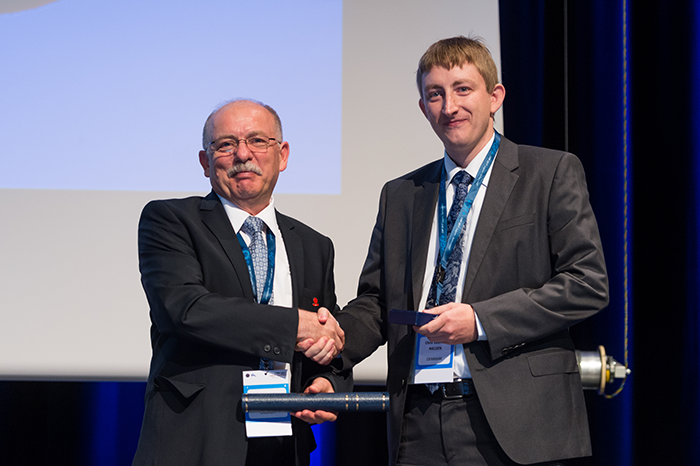The prize was presented at CIRP’s General Assembly in Lugano in August, where it is presented each year to a researcher under 35 who has presented an outstanding research at CIRP’s General Assembly the year before. On that occasion, Chris V. Nielsen had presented the research results from his paper: “Modelling of real area of contact between tool and workpiece in metal forming processes including the influence of subsurface deformation.”
The research is among the most important results of Chris V. Nielsen’s postdoc project COMESURF, and it solves a central problem in the early work of friction modelling at DTU Mechanical Engineering, and so it is an important step for the researchers to establish a general friction model to be used in connection with metal forming processes.
“The new research is based on finite element modelling (FEM) and experiments carried out in specially designed equipment,” tells Chris V. Nielsen. “The new modelling includes the facts that the real contact area, and therefore the friction, increases drastically with the increasing deformation of the underlying material. This is especially important for numerical modelling of plate shaping processes. I hope now to be lucky to receive fundings to be able to implement the new model for simulation of industrial plate shaping processes.”
CIRP’s F.W. Taylor Medal Award has been presented every year since 1958, and it is only the second time it has been presented to a Dane. The first time was when the prize was presented to H.N. Hansen in 1998.
C.V. Nielsen, P.A.F. Martins, N. Bay: Modelling of real area of contact between tool and workpiece in metal forming processes including the influence of subsurface deformation. CIRP Annals, 65/1 (2016) 261-264.

President of CIRP, Professor Yusuf Altintas presents Chris V Nielsen with the F.W. Taylor Medal. Photo: CIRP.